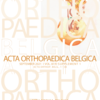Can bone chips block the flipping of the continuous loop button?
anterior cruciate ligament, ; ACL tear ; reconstruction ; loop ; bone chips, ; complication
Published online: Oct 08 2021
Abstract
The aim for the study is to provide sufficient bone- graft contact in anterior cruciate ligament (ACL) reconstruction, the shortest loop should be used. However, the more loop length decreases, the more difficult it is to flip the loop. Our aim was to investigate the possible cause of this problem.
Between January 2013 and August 2015, 29 knees from 29 patients with primary anatomic ACL reconstruction due to ACL rupture were included in the study. Transtibial reconstructions, revision cases, deformities, and fixations with adjustable- loop systems were excluded. The tunnel depth was measured through the dilator, and at the same time the bone chips were stacked on the tunnel base consciously. Following the second measurement, the bone chips were removed by irrigation inside of the tunnel with the aid of a shaver, and the measurement was made. In order to prove the effectiveness of the washing effect on the flipping margin, ratio between these two numbers was calculated and analyzed by the Mann-Whitney U test between the 15 mm and 20 mm groups.
The average flipping margin was 0.46 ± 0.24 for the 15 mm group and 5.3 ± 0.30 mm for the 20 mm group. According to this, the mean flipping margin in the 20 mm group was found to be significantly higher than 15 mm one (p=0,001). When the ratio of the washing effect to flipping margin was examined, it was significantly higher in the 15 mm group (median : 4.07 mm) than in the 20 mm group (median : 0.30 mm) (p =0.001)
Irrigation inside of the socket must be performed for the 15 mm loop length, however, this is not a requirement for >20 mm.
Level of Evidence : Level IV ; Case series.
